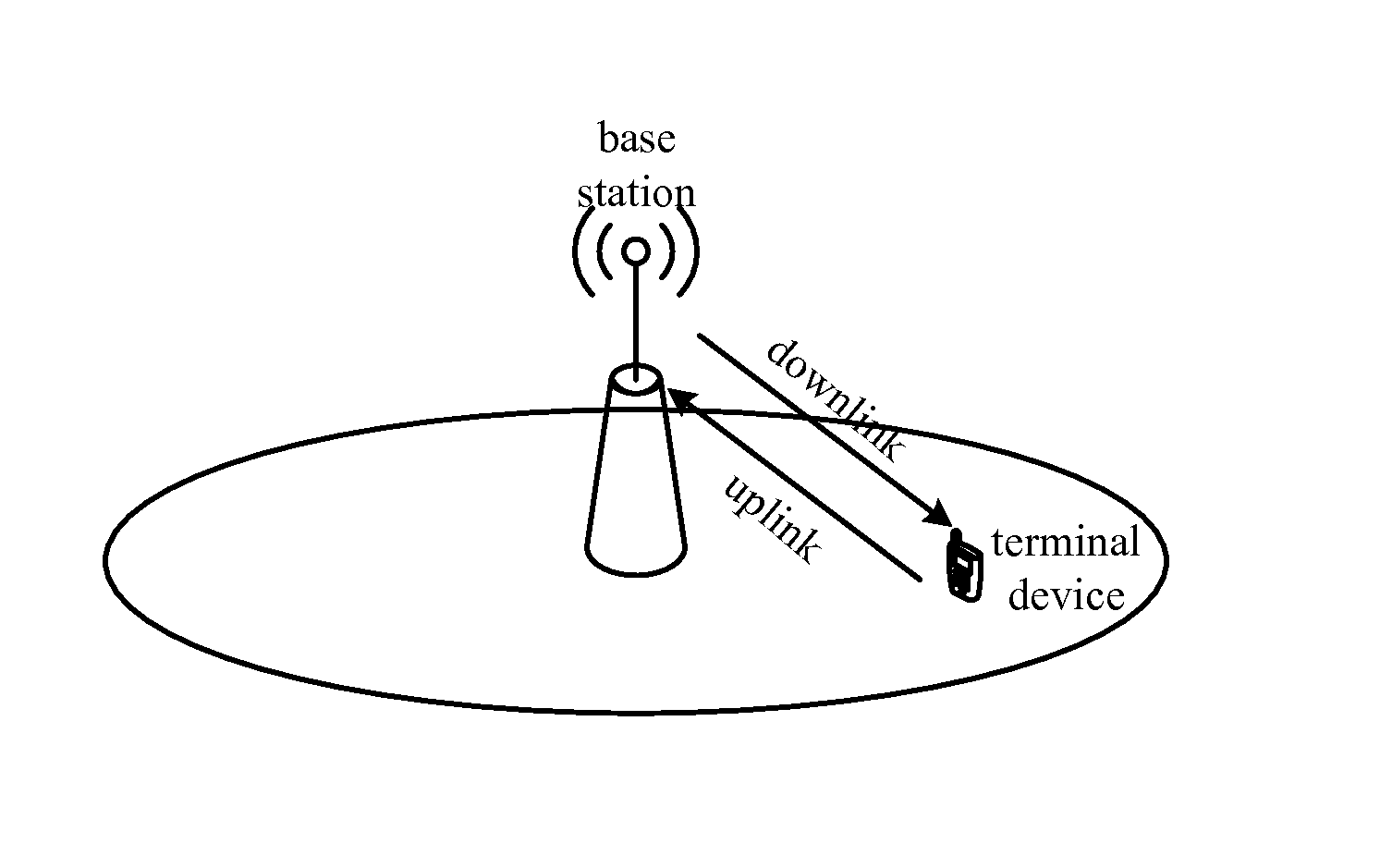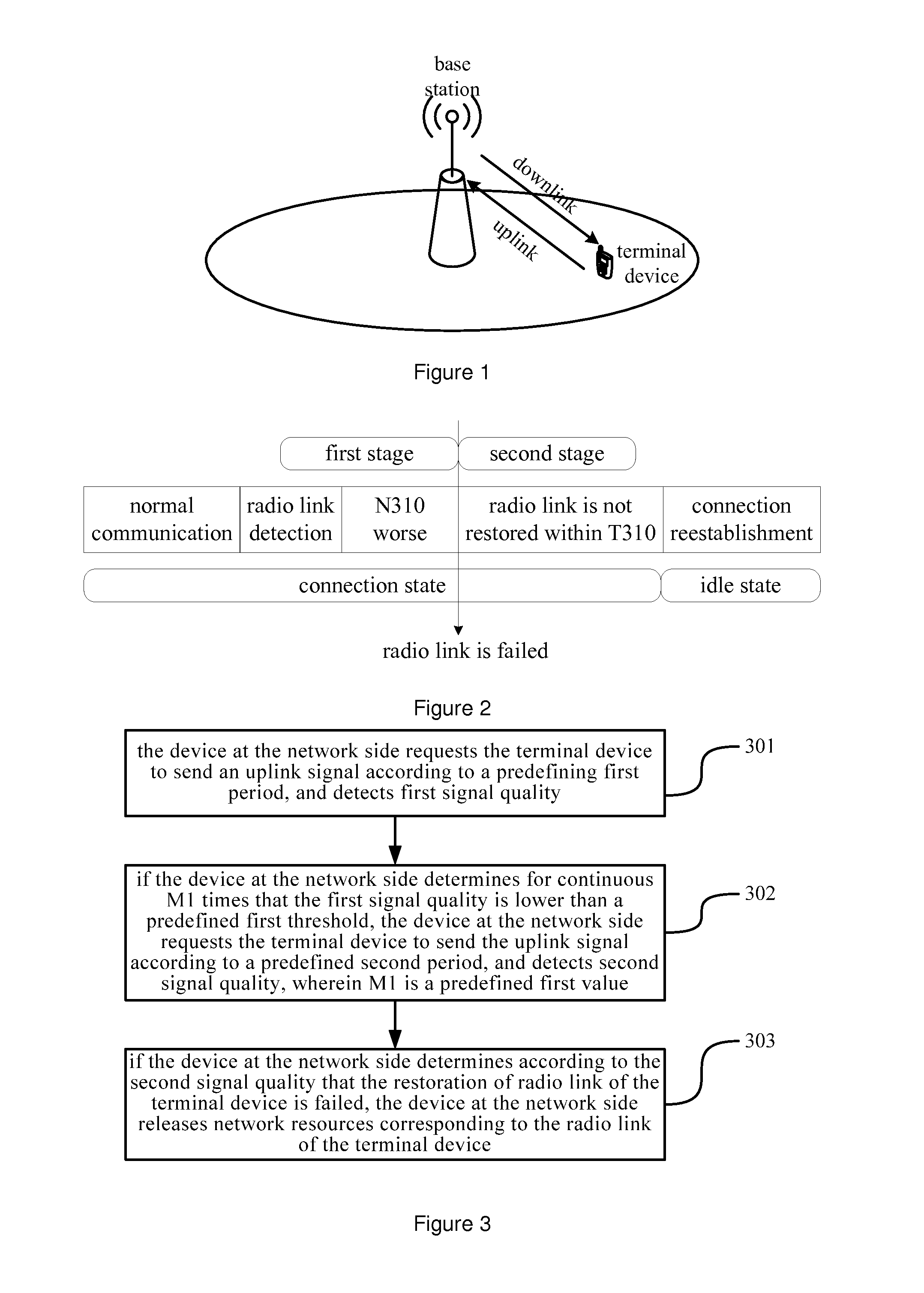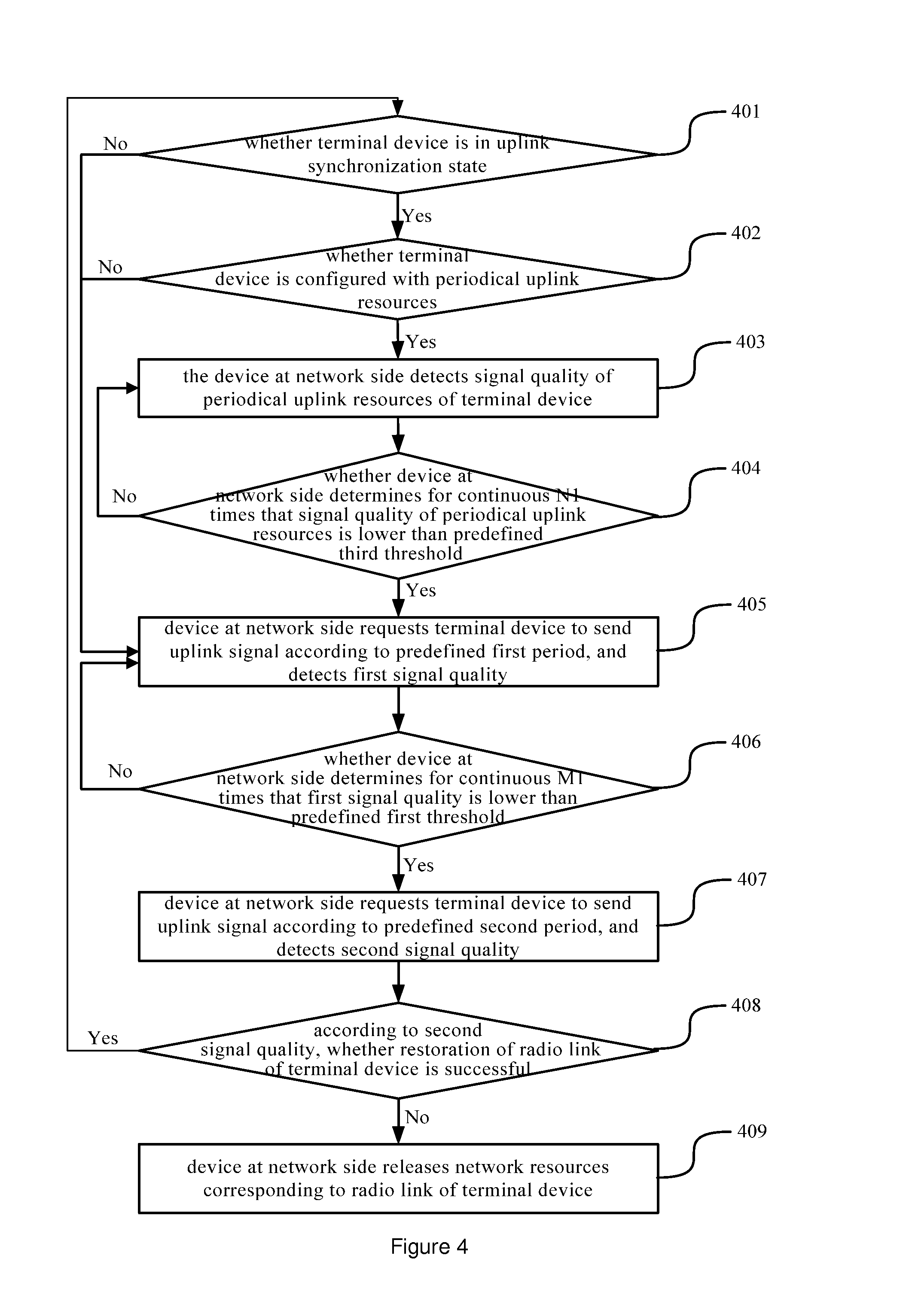Method and Device for Handling Radio Link Failure
a radio link and failure technology, applied in the field of communication technologies, can solve the problems of inconfigurable uplink resources and waste of resources, and achieve the effects of accurate determination of the state of radio links, effective avoidance of wrong operations, and improved system reliability
- Summary
- Abstract
- Description
- Claims
- Application Information
AI Technical Summary
Benefits of technology
Problems solved by technology
Method used
Image
Examples
Embodiment Construction
[0027]In a mobile communication system, it is usually specified that terminal devices detect radio links. When a terminal device determines that a radio link is failed and tries to reconnect to a device at network side, but the device at the network side has not found the failure of the radio link, the device at the network side may still schedule the terminal device, and thus radio resources may be wasted. Accordingly, examples of the present disclosure provide a method and device for handling radio link failure. In the method and device, the state of radio link of the terminal device is detected by the device at the network side, thereby avoiding invalid scheduling caused by the failure of the radio link and improving the utilization of system resources.
[0028]The solution of the present disclosure is described clearly hereinafter with reference to the accompanying drawings. Obviously, the described examples are only partial examples of the present disclosure, but are not all examp...
PUM
 Login to View More
Login to View More Abstract
Description
Claims
Application Information
 Login to View More
Login to View More - Generate Ideas
- Intellectual Property
- Life Sciences
- Materials
- Tech Scout
- Unparalleled Data Quality
- Higher Quality Content
- 60% Fewer Hallucinations
Browse by: Latest US Patents, China's latest patents, Technical Efficacy Thesaurus, Application Domain, Technology Topic, Popular Technical Reports.
© 2025 PatSnap. All rights reserved.Legal|Privacy policy|Modern Slavery Act Transparency Statement|Sitemap|About US| Contact US: help@patsnap.com



